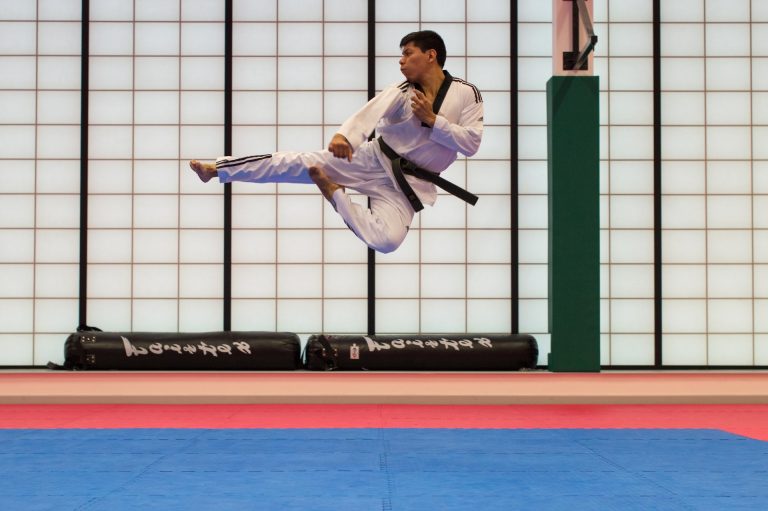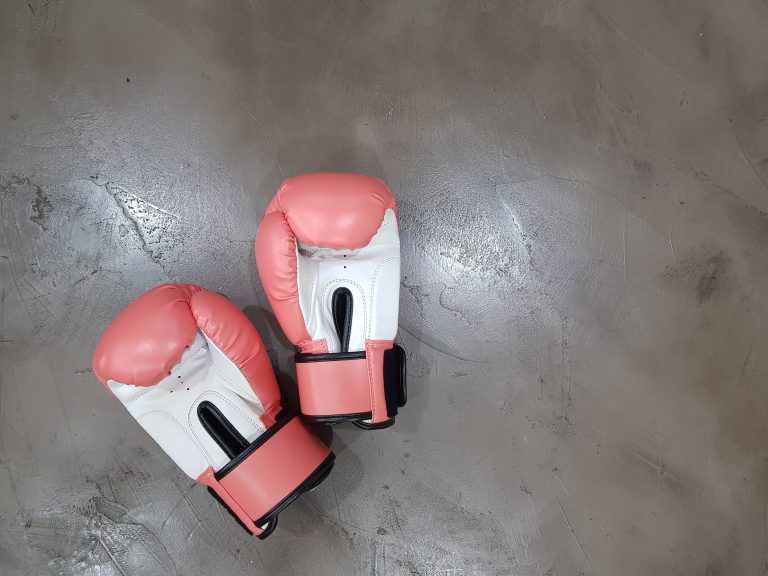How Many Color Belts Are in Karate?
Karate is an ancient martial art that originated in Okinawa, Japan, and has gained popularity worldwide for its effectiveness as a form of self-defense and physical improvement. Karate practitioners, also known as karateka, progress through a rank system that is marked by the color of their belts. In this blog post, we will discuss how many color belts are in karate, their significance, and the skills required to achieve them.
The Basic Belt System in Karate
The belt system in karate, like most martial arts, consists of several levels or ranks, each of which is marked by a distinctive color. The basic belt system in karate usually ranges from white to black. A beginner starts with a white belt, and as they progress, they will continuously graduate to higher levels of belts. The colors of the belts indicating the rank system may vary depending on the martial art or country.
How Many Color Belts Are in Karate?
The number of color belts in karate may vary depending on the school or organization. However, the basic color belts in karate are generally as follows:
- White Belt
- Yellow Belt
- Orange Belt
- Green Belt/li>
- Blue Belt
- Purple Belt
- Brown Belt
It’s worth noting that some schools or organizations may include additional belts between these ranks or use different colors. Moreover, some organizations may have some additional ranks, such as junior and senior belts.
The Significance of Each Belt Color in Karate
In the karate belt system, each color band signifies a different level of skill and knowledge. As mentioned earlier, a beginner starts with a white belt, indicating their novice status. The following sections discuss the significance of each color.
White Belt
The white belt is the starting rank in karate, indicating a beginner’s level. The white color symbolizes innocence, purity, and a lack of knowledge.
Yellow Belt
A yellow belt in karate indicates an improvement in skill level. The yellow belt symbolizes the sunlight that shines on the student as they continue to train and improve.
Orange Belt
An orange belt signifies a greater level of skill and development since the student first began practicing karate. Orange represents the intensity and the growing confidence of an individual in this level.
Green Belt
The green belt indicates a higher level of knowledge and ability. Green is the color of growth, and in this context, symbolizes the students‘ further development and stage of growth.
Blue Belt
The blue belt marks a student’s progression towards a higher level of understanding and mastery. Blue represents the calmness of water and reflects the increased control and calmness a student learns in the more advanced stages of karate.
Purple Belt
A purple belt symbolizes the transition to a new level in karate. It indicates that the student is now taking on more significant responsibilities and deeper teachings.
Brown Belt
The highest-ranked color belt before achieving the Black Belt, the brown belt is a symbol of achieving high-level skills, experience, and knowledge. Brown represents the seed that is planted in the ground and is growing roots.
How Many Color Belts are in Karate?
Introduction
Karate is a highly popular martial art that has been around for centuries. It is well-known for its powerful movements and strikes, as well as its strict grading system. The grading system is based on color belts that reflect a student’s level of mastery of the art. In this blog post, we’ll answer some of the most frequently asked questions about color belts in Karate.
What is the Karate Belt System?
The karate belt system is a standardized method of tracking a student’s progression from beginner to expert. It’s important to note that the belt does not necessarily represent a student’s ability to fight, but rather their level of mastery of the techniques and principles of Karate. There are typically two main categories within the belt system:
- Kyu Ranks (Student Belts): These are the ranks below black belt. There are 10 kyu ranks in total, starting from the white belt (the lowest ranking belt) to the brown belt.
- Dan Ranks (Expert Belts): These are the ranks above black belt. There are 10 dan ranks in total, starting from the black belt (the lowest ranking dan) to the red belt.
How Many Color Belts are in the Kyu Rank System?
There are typically six colored belts in the kyu rank system, excluding the white and brown belts. The colored belts are:
- Yellow Belt: This is the first colored belt which is earned after the white belt, often awarded after about two to three months of training or more depending on individual progress. Students who have reached this level have demonstrated the basic techniques of Karate.
- Orange Belt: This is the second colored belt, awarded after around six months of training or more. At this level, students have gained more confidence in their techniques and have demonstrated their ability to apply what they have learned in combat.
- Green Belt: This is the third colored belt and is awarded to students who have demonstrated a higher level of proficiency in their techniques. Students must complete an intense grading process to earn this belt.
- Blue Belt: This is the fourth colored belt and is a significant milestone in a student’s Karate journey. Students at this level have demonstrated their ability to use their techniques with speed and accuracy.
- Purple Belt: This is the fifth colored belt and is awarded to students who are now considered to be advanced students. They are able to effortlessly apply their techniques in combat situations.
- Red Belt: This is the sixth and final colored belt in the kyu rank system. Students at this level have demonstrated mastery of the techniques and principles of Karate, and are now prepared to move on to the dan rank system.
What is the Brown Belt and How Does it Fit into the Kyu Ranks System?
The brown belt is the only belt in the kyu rank system that is not a colored belt. It is earned after students have completed the colored belt rankings and are on their way to earning their first dan black belt. The brown belt signifies that a student has gained a deeper understanding and mastery of their techniques, and is on the cusp of becoming a black belt.
How Long Does it Take to Move Up the Ranks?
There is no set timeframe to move up the ranks in the karate belt system. It can take as little as six months to earn a colored belt up to a year or more. The time it takes for students to progress to higher levels depends on their dedication, attendance, and skill level. Moving up the ranks often means taking a grading test where students have to demonstrate that they can execute certain requirements for their level.
How Many Color Belts Are in Karate?
Introduction
Karate has become one of the most popular martial arts in the world. Practitioners of this ancient form of self-defense learn techniques that help to develop not only physical strength but also mental fortitude. One of the defining elements of karate is the use of belts to distinguish skill and rank levels amongst practitioners. But how many color belts are there in karate? In this blog post, we will answer this question and provide additional information on the different belts that one can earn while training in this martial art.
How Many Color Belts Are in Karate?
The karate belt system usually has around ten levels, each represented by a different color. The number of belts may vary slightly depending on the karate school or organization, but it generally follows this pattern:
White Belt
The white belt is usually the first belt a karate student will learn. It represents the beginning of the journey towards mastery of the discipline. A white-belted practitioner typically has little or no experience with karate at this point.
Yellow Belt
The yellow belt represents the first promotion for a student. At this point, the student has demonstrated basic proficiency in the foundational skills of karate. The yellow belt signifies that the student is building a strong foundation of skills and can begin to explore more advanced techniques.
Orange Belt
The orange belt represents further progress towards developing expertise in karate. At this stage, the student is expected to have a good understanding of the basics and should be able to execute more complex techniques with increased accuracy and control.
Green Belt
The green belt represents more advanced proficiency in the discipline. At this point, the student should be able to execute techniques with precision and speed, while maintaining control and focus.
Blue Belt
The blue belt is typically awarded to a student who has demonstrated exceptional skill and knowledge of karate. The student should be able to apply learned techniques with great speed and control, and should have a deep understanding of the underlying principles that guide the practice of karate.
Purple Belt
The purple belt represents further progression and development. It is awarded to a student who has demonstrated a deep knowledge of karate and the ability to execute advanced techniques with grace and fluidity. A purple-belted student is considered a strong practitioner of karate and likely a valuable member of any dojo.
Brown Belt
The brown belt represents the second-highest level of proficiency in karate. It is a significant achievement to reach this level, and the brown-belted student is expected to have developed expert-level techniques. A brown-belted student is typically seen as a leader within a dojo and as someone who is dedicated to the practice of karate.
Black Belt
The black belt is the highest rank of proficiency in karate. It is reserved for those who have demonstrated exceptional expertise and dedication to the discipline. Black-belted practitioners are seen as masters of karate and pillars of the community. Reaching the rank of black belt is a significant accomplishment and often marks the beginning of a new chapter in a practitioner’s journey towards mastery.
Conclusion
The karate belt system represents a journey towards mastery of the discipline. Each colored belt represents a different level of proficiency and marks a significant milestone in a student’s journey. Although the number of belts may vary slightly across karate schools, the underlying principles remain the same: hard work, dedication, and a willingness to learn and grow. We hope this blog post has answered your questions about how many color belts are in karate, and we encourage you to continue your exploration of this fascinating martial art.
Inhaltsverzeichnis






